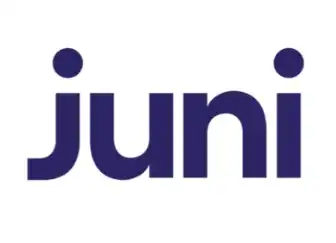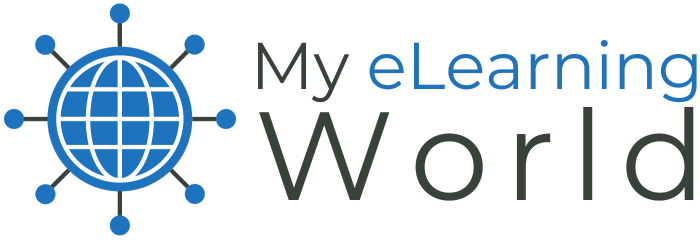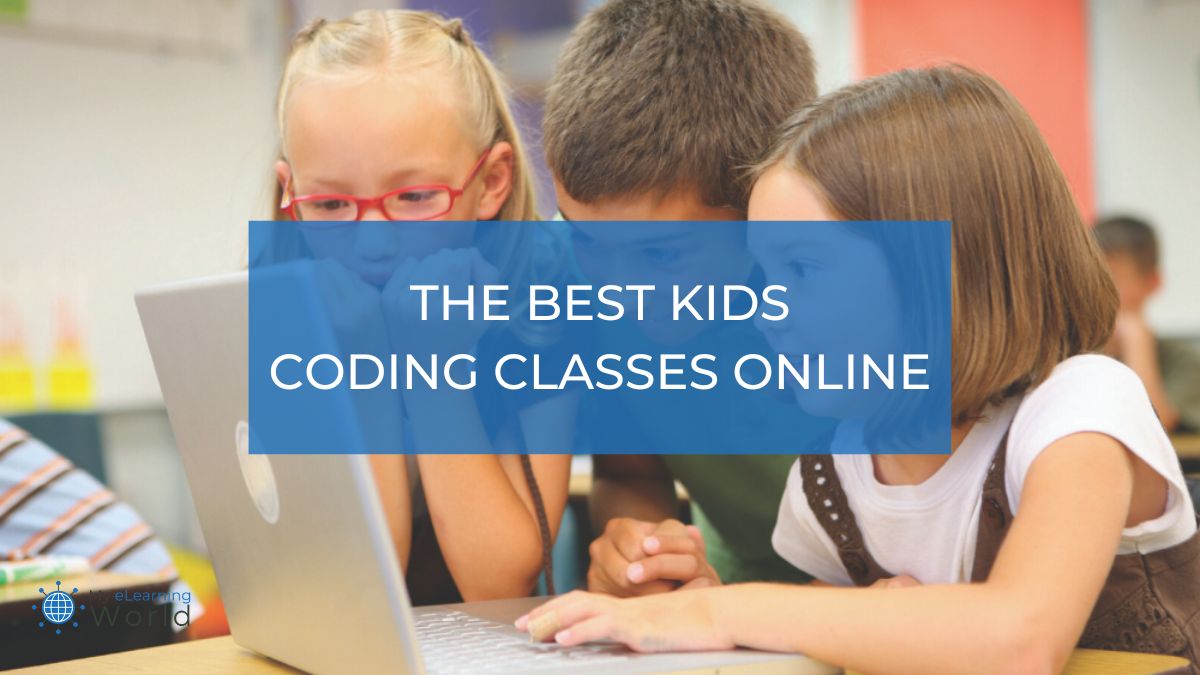Studies show that 90% of parents want their child to study computer science, but the problem is only about half of schools actually teach computer programming. But here’s the good news — the best kids coding classes online offer a flexible, affordable, and engaging way to help your children develop essential computer science skills, blending learning with fun to spark a lifelong interest in technology.
Of course, there’s no shortage of kids coding classes online, and not all of them are worth your time or money. I’ve analyzed dozens of different options and ranked what I believe to be the very best kids online coding courses based on a variety of factors, including quality of curriculum, teacher experience, student/parent reviews, and affordability (click here to learn about our entire Editorial Process & Methodology for product reviews).
What are the Best Kids Coding Classes Online?
1. Juni
 Juni Learning: Online Learning & Tech Programs for Kids
Juni Learning: Online Learning & Tech Programs for Kids
Juni pairs your child with a distinguished instructor for one-on-one online classes in STEM subjects, including Coding, Algebra, Chemistry, and beyond.
Price
$275/month
Juni is my top pick for online coding classes for kids, and for good reason.
With a curriculum that’s both engaging and educational, Juni makes coding accessible to kids, building not just their technical skills but also their problem-solving abilities, creativity, and confidence.
As we talked about in our Juni review, what sets this platform apart is its personalized approach to learning. Each student is matched with an instructor who’s not just skilled in coding but also trained to teach young minds.
This one-on-one attention ensures that lessons are tailored to each child’s pace and learning style, making complex concepts more digestible.
As an educator myself, I’ve seen firsthand how impactful personalized learning can be, and Juni’s model is a perfect example of this.
The flexibility of Juni’s program is another thing I love about it.
Understanding that families have varying schedules, Juni offers the convenience of attending classes from anywhere with times to fit your schedule.
Juni’s project-based learning approach is another thing that really resonates with me. Instead of dry, theoretical lessons, students work on exciting projects that apply what they’ve learned. This hands-on experience makes learning fun and relevant while helping solidify the skills and concepts they’re learning.
The inclusion of coding clubs and community projects takes the learning experience to another level, providing a platform for students to showcase their work and connect with peers.
While Juni isn’t the cheapest option out there, the value it provides is best in class in my opinion.
Visit their website to book your child’s first free placement class!
2. codeSpark Academy
Price
codeSpark pricing is as follows:
- $15/month
- $90/year
Looking for a fun and interactive platform for introducing your child to coding? codeSpark Academy is a good option.
The app has an engaging interface designed for children. You don’t have to worry about your child getting bored while they’re learning to code.
Aimed at children aged 5-10, codeSpark teaches coding via various interactive activities. I’ve found that using fun games and activities to teach concepts helps your child stays focused at all times.
The best part — the platform is mostly word-free! All the tutorial activities are picture-based. So even the youngest of coders don’t have any trouble navigating the platform.
You can try codeSpark free for 7 days.
3. CodeWizardsHQ
Price
$447/course
Designed for ages 8 to 18, CodeWizardsHQ is an online learning platform that has just about everything your child needs to start his or her journey as a coder.
What sets CodeWizardsHQ apart isn’t just the huge selection of coding languages offered, from beginner-friendly Scratch to more advanced languages like Python and JavaScript, but also the quality of instruction. Each instructor is truly a subject matter expert that has also passed thorough safety screenings, so you can feel confident your kid is learning online in a a secure and enriching environment.
Small class sizes at CodeWizardsHQ mean that each student receives personalized attention, making it easier for them to grasp complex concepts and stay engaged.
I found that the curriculum is also really well thought out and innovative, incorporating projects and topics that resonate with kids today, like Minecraft modding and mobile app development. This keeps the learning process exciting and relatable, sparking a genuine interest in coding.
One of the coolest aspects of CodeWizardsHQ is its internship program with non-profits, providing students with real-world coding experience and a valuable opportunity to build their resumes.
4. Kodable
Price
- $9.99/month.
- $79.99/year.
- $149.99/Lifetime
Designed for children and pre-teens between the ages of 4-11, Kodable offers easy-to-understand coding lessons and games so your child can start taking charge of his learning from a young age.
Unlike other coding apps that stick strictly to drag-and-drop programming, Kodable takes it a step further by incorporating elements of character customization and engaging storylines into the learning process.
In my opinion this approach makes coding more relatable and more fun for kids.
Kodable’s curriculum challenges children to navigate through mazes using loops and functions, a method that really helps develop their logic and problem-solving skills.
But I think what sets Kodable apart is how it introduces kids to actual coding concepts. While kids might not be typing out code line by line, they interact with pre-filled code snippets, learning to control the flow of the program by dragging and dropping the correct elements into place. This is a really cool way to introduce young ones to the syntax and structure of programming without overwhelming young learners.
However, it’s worth noting that while Kodable offers a comprehensive K-12 curriculum that introduces advanced programming concepts, I found that the learning path can sometimes be a little unclear. Some challenges may seem too difficult for kids, with no obvious solutions, potentially leading to moments of frustration.
Despite these minor drawbacks, Kodable’s strengths make it a great choice for parents and teachers looking to introduce their children to the world of coding.
5. CodaKid
Price
- $29/month
- $199/year
What makes CodaKid great is it uses real programming languages and professional tools right from the start. Kids are learning the real thing here, which can be challenging, but the results are exceptional.
I like that the courses are self-paced, which means students can dive into coding without feeling rushed or pressured and work through things at a speed that matches their skill level and preferences.
The curriculum at CodaKid is vast and varied, with 58 coding courses, 220 online quests, and over 600 challenges that keep students engaged and learning.
The content is designed to be deeply engaging and playful, making complex concepts accessible and fun. This integration of fun elements into the learning process helps ensure that coding principles stick with students long after they’ve completed their courses.
I do have to point out that while CodaKid excels in many areas, mobile learning options are somewhat limited in my opinion, which could be a drawback for families on the go. Additionally, the very elements that make CodaKid so engaging—the fun activities and games—might sometimes distract younger learners from the core learning objectives.
Despite these things, CodaKid is a choice that’s hard to beat.
6. CodeMonkey
Price
- Individual: Starting at $6/month.
- Family: Starting at $12/month.
- Homeschool: Starting at $20/month.
If your child has trouble getting the hang of coding and the subject appears too scary, invest in CodeMonkey and watch his interests take a 180-degree turn.
This coding platform is all about making coding fun; the skill is taught through a monkey game that keeps children immersed for hours at a time.
Have your child play the game and watch him pick up valuable skills while he’s catching bananas for his monkey.
Final Thoughts
Whether your kid is brand new to coding and wants to learn the foundational principles or they’re ready to dive deeper into more complex programming languages and game development, finding the right online coding class is key to unlocking their potential. The platforms we’ve reviewed offer a range of options tailored to different learning styles, interests, and levels of expertise.
Remember, the best coding class for your child is one that teaches them valuable skills while also letting them have some fun and encouraging them to explore, create, and innovate.
Have any questions about this guide to the best kids coding classes online? Leave a comment below so we can help.


